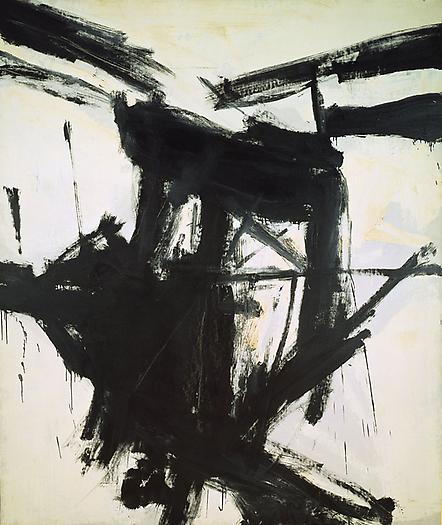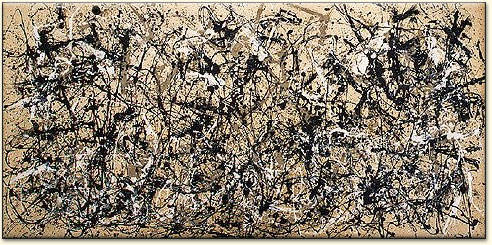Abstract Expressionism
To further develop my study into visualising the physical feelings of emotion, i wanted to look at how emotion has been explored throughout art in different eras.
Abstract Expressionism is probably one of the best eras to explore as visually expressing emotions doesn't particularly take on a specific form.
Jackson Pollock being an extremely influential artist in the 20th century was an obvious choice to study when looking at how to express something on canvas.
Autumn Rhythm No. 30, Jackson Pollock, 1950
Jackson Pollocks process of work was influenced by his alcoholism, effecting his judgement and perspective. The works were created while in complete silence and during the process and were created using the subconscious.
"When I am in my painting, I'm not aware of what I'm doing. It is only after a sort of 'get acquainted' period that I see what I have been about. I have no fear of making changes, destroying the image, etc., because the painting has a life of its own. I try to let it come through. It is only when I lose contact with the painting that the result is a mess. Otherwise there is pure harmony, an easy give and take, and the painting comes out well.
—Jackson Pollock, My Painting, 1956 (History of Art: The Western Tradition)
"A dripping wet canvas covered the entire floor … There was complete silence … Pollock looked at the painting. Then, unexpectedly, he picked up can and paint brush and started to move around the canvas. movements, slow at first, gradually became faster and more dance like as he flung black, white, and rust coloured paint onto the canvas." Hans Namuth, photogrpaher 1950
The next artist i decided to explore was Gerhard Richter whose work i saw in the Tate Modern Gallery in London. He created a series of six paintings named after the American Avant-Garde composer John Cage. The paintings are created like his earlier works using a squeegee and a mixture of layering and erasure. They are built up of layers of brush strokes and scrapings and rippled paint during the process of drying. Some paintings resemble a running river whereas some appear to have the texture and appearance of a concrete wall. Richter was listening to the music of John Cage while creating the pieces and quoted 'I have nothing to say but i am saying it.' Richter was attracted to the way the music was constructed with total randomness, which was reflected in his work. Critics have commented on the similarities with the fluctuations in the music and the paintings.
Detail of one of Gerhard Richter’s Cage Paintings, 2006.
http://vimeo.com/36088557
Gerhard Richters work inspires me in the way which music influences the type of work and the marks that are made. Music has a great influence on emotion and i believe that using this i can explore deeper into the physical feeling of emotion. I think that anger can be directly effected by music as it is for some people, an escape or a release for held back emotions.
Willem de Kooning: Gotham News (1955)
William De Koonings work 'Gotham News' reflects the hustle and bustle of New York. It displays marks which suggest violent movements or even energetic strokes. Although the work appears to be made rather quickly, each stroke was placed with a lot of thought, a lot like Pollocks work, it was planned and worked upon until the artist considered to work to be complete.
Ref:
https://www.tate.org.uk/art/artists/gerhard-richter-1841
http://www.albrightknox.org/collection/collection-highlights/piece:de-kooning-gotham-news/


































